Abstract
We have previously observed that Thai adults who are infected with malaria have a loss of peripheral blood T cells, and that patient sera contain lymphocytotoxic antibodies. In the present study, we examined peripheral blood mononuclear cells from Thai adults naturally infected with Plasmodium falciparum and Plasmodium vivax for the capacity to undergo blastogenesis in response to phytohemagglutinin, concanavalin A, pokeweed mitogen, and allogeneic cell surface antigens in a one-way mixed leukocyte reaction. In addition, sera from actively infected patients were examined with regard to suppressive capabilities toward normal lymphocyte blastogenesis by using the same assays. We found that patient mononuclear cells exhibited normal reactivity to phytohemagglutinin, concanavalin A, and pokeweed mitogen when compared with controls. However, peripheral blood mononuclear cells from patients had a decreased stimulatory capacity in the allogeneic mixed leukocyte reaction, and P. vivax, but not P. falciparum, lymphocytes exhibited decreased responsiveness in the mixed leukocyte reaction. Furthermore, sera from patients with active malaria induced decreased responsiveness by normal mononuclear cells to phytohemagglutinin and concanavalin A, but not pokeweed mitogen; pooled P. falciparum sera caused decreased responsiveness to allogeneic cell surface antigens in the mixed leukocyte reaction. These studies indicate that despite the lost of circulating T cells during the course of infection with malaria, blastogenic responsiveness remains intact, and that sera from patients with malaria are capable of exerting negative immunoregulatory effects.
Full text
PDF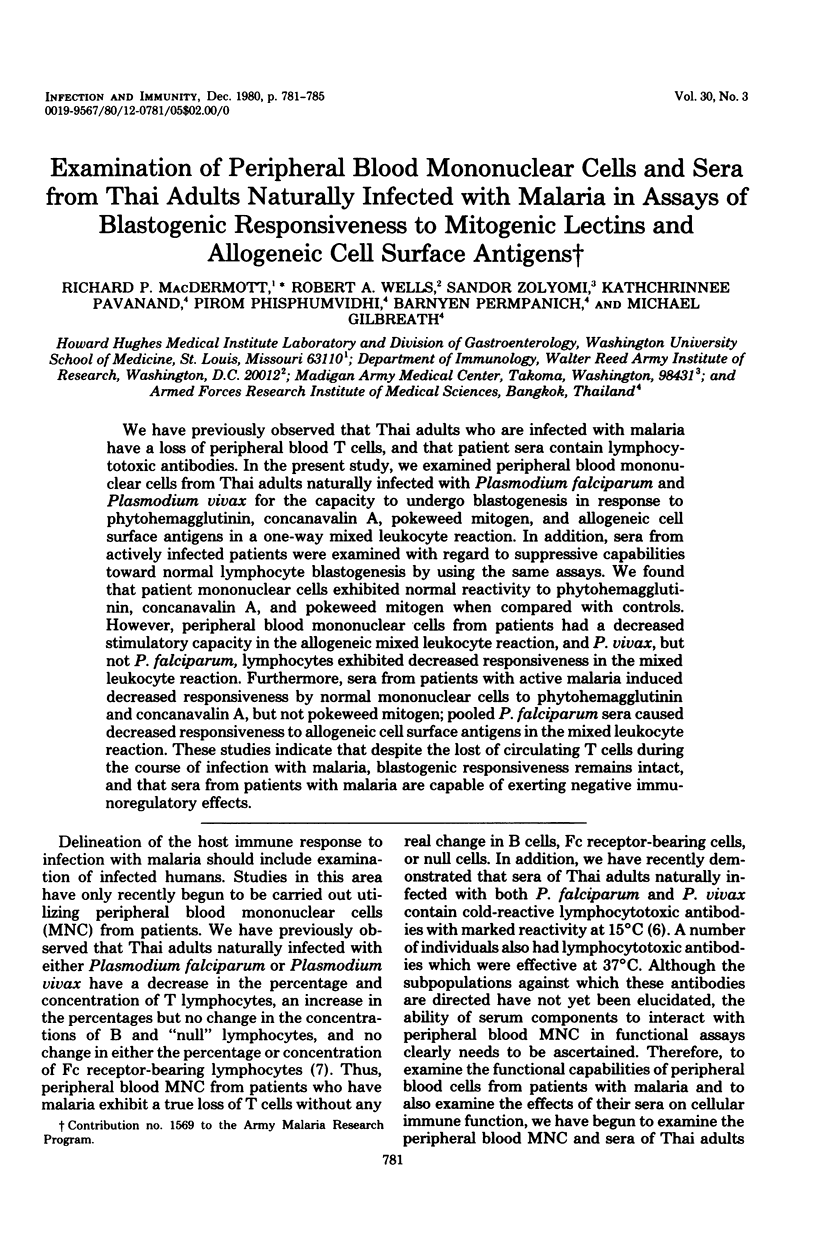
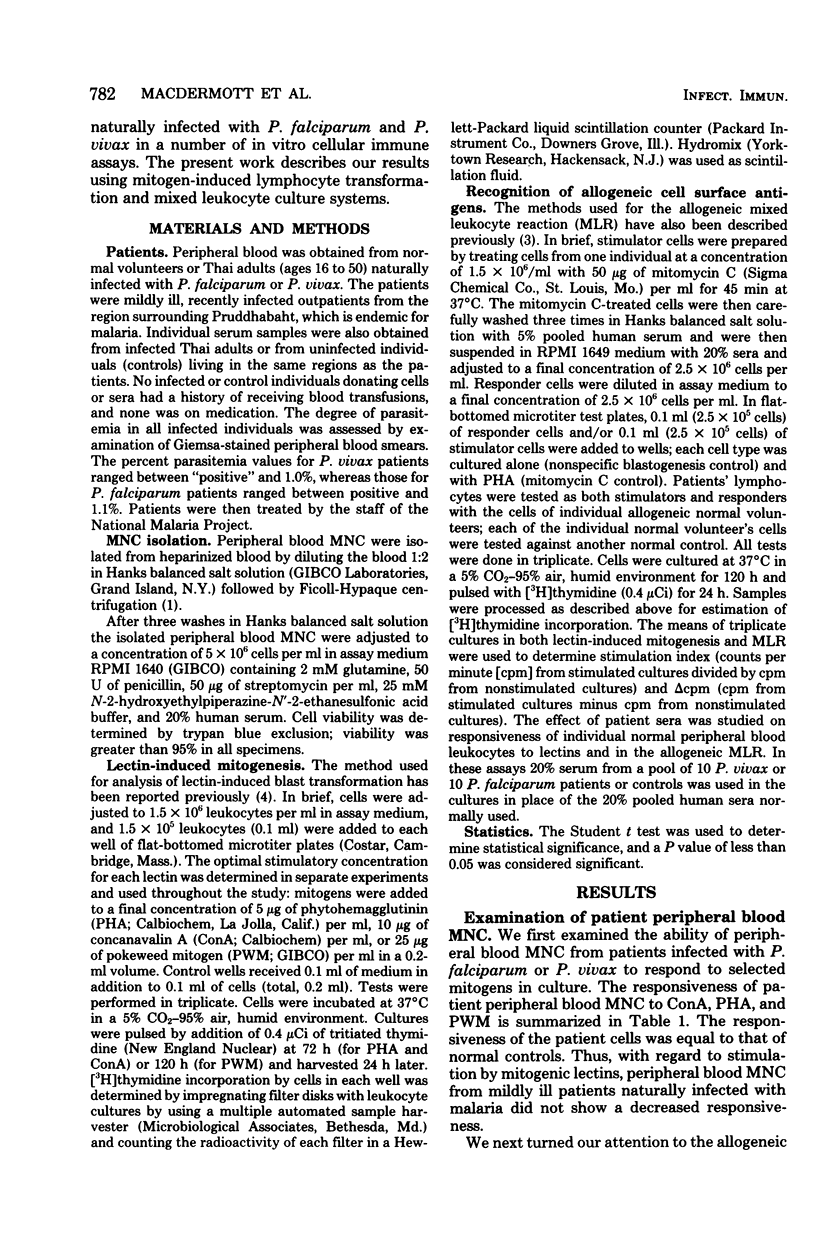
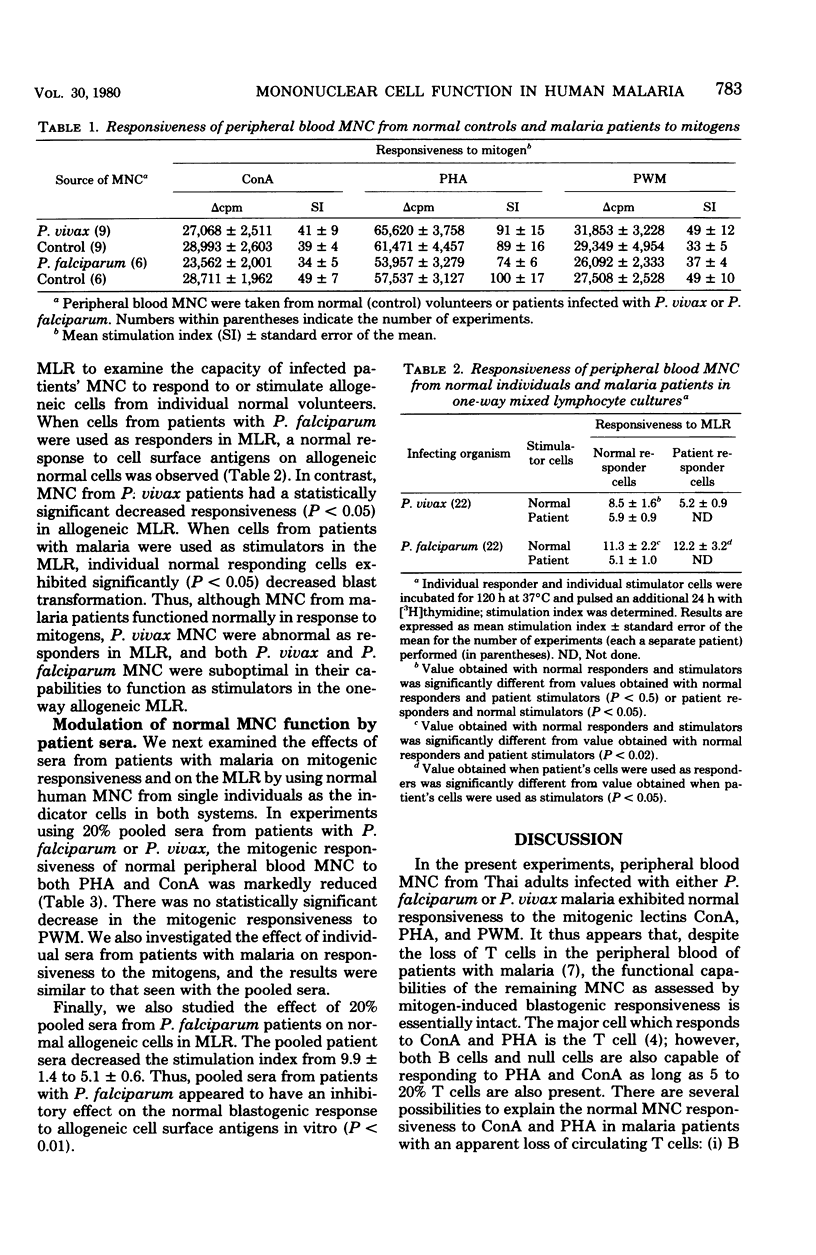
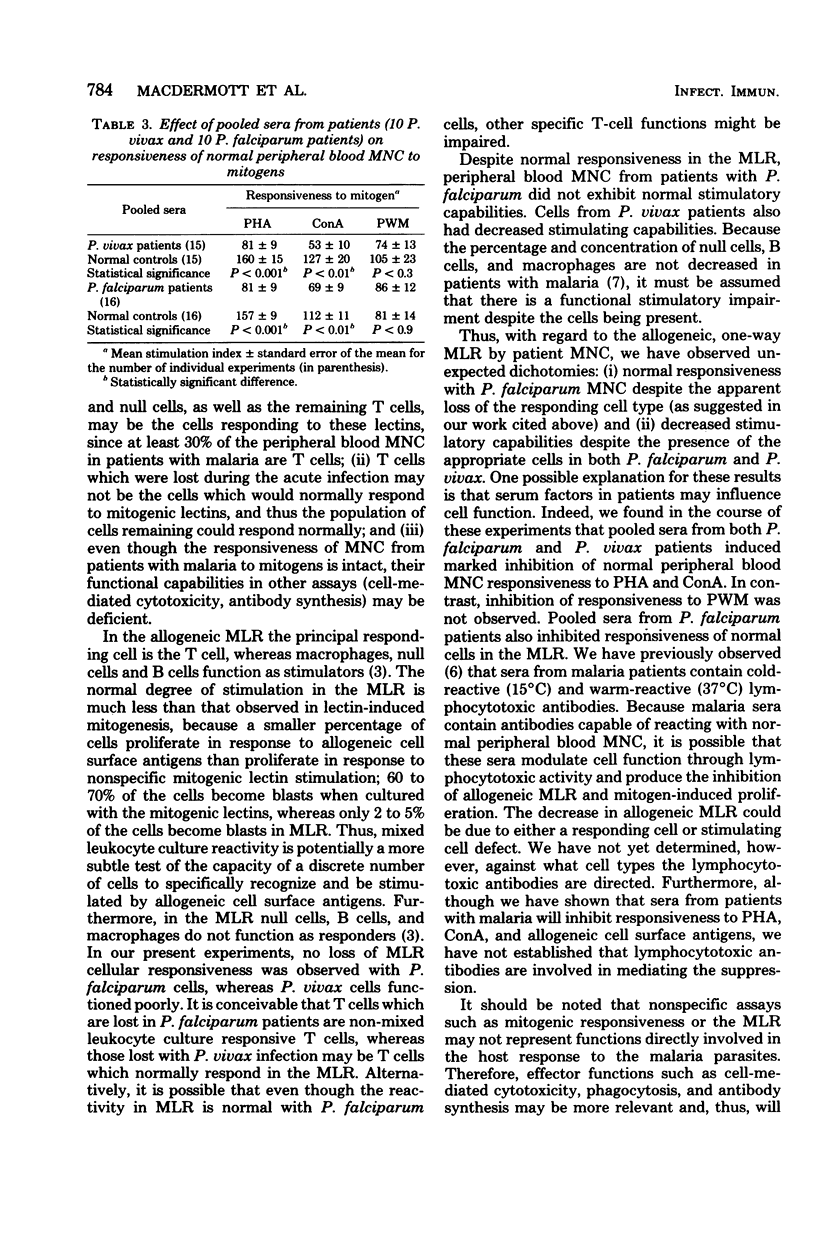
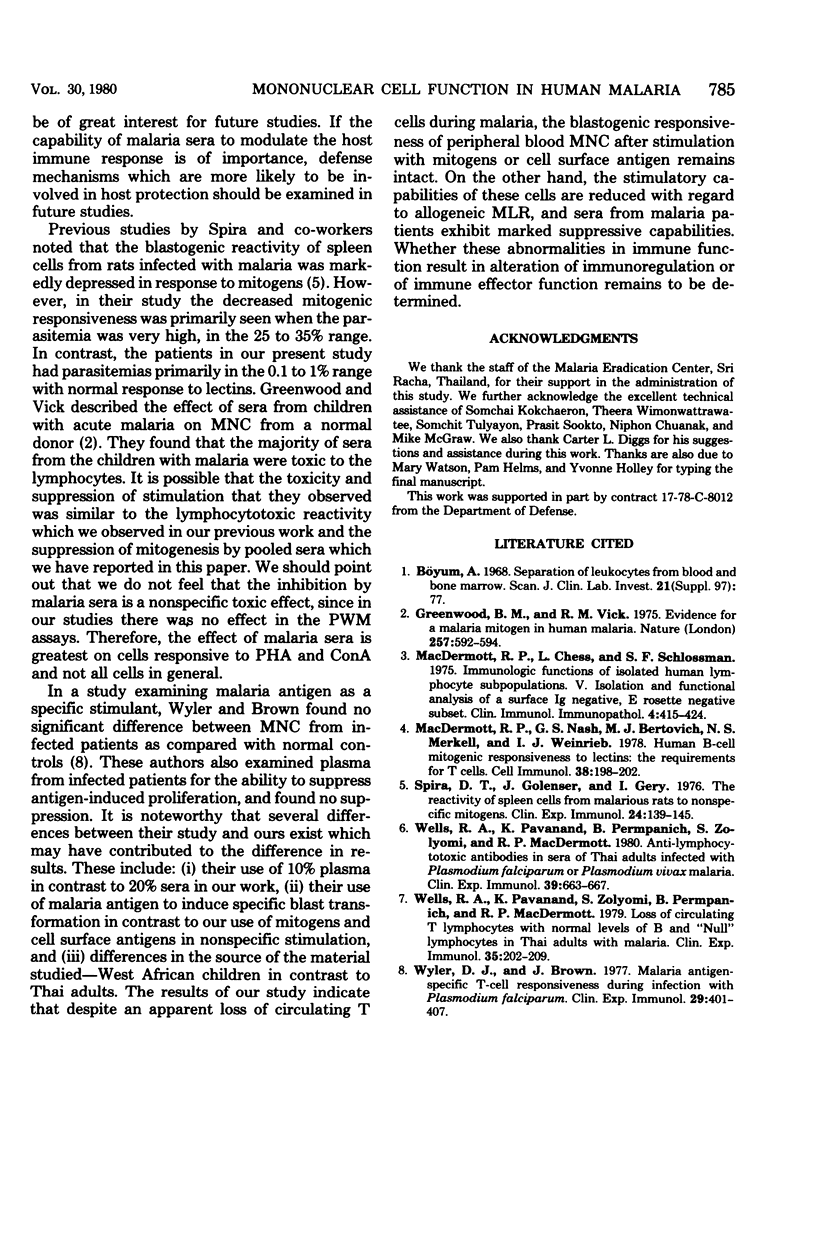
Selected References
These references are in PubMed. This may not be the complete list of references from this article.
- Greenwood B. M., Vick R. M. Evidence for a malaria mitogen in human malaria. Nature. 1975 Oct 16;257(5527):592–594. doi: 10.1038/257592a0. [DOI] [PubMed] [Google Scholar]
- Mac Dermott R. P., Chess L., Schlossman S. F. Immunologic functions of isolated human lymphocyte subpopulations. V. Isolation and functional analysis of a surface Ig negative, E rosette negative subset. Clin Immunol Immunopathol. 1975 Sep;4(3):415–424. doi: 10.1016/0090-1229(75)90010-0. [DOI] [PubMed] [Google Scholar]
- MacDermott R. P., Nash G. S., Bertovich M. J., Merkel N. S., Weinrieb I. J. Human B-cell mitogenic responsiveness to lectins: the requirement for T cells. Cell Immunol. 1978 Jun;38(1):198–202. doi: 10.1016/0008-8749(78)90047-3. [DOI] [PubMed] [Google Scholar]
- Spira D. T., Golenser J., Gery I. The reactivity of spleen cells from malarious rats to non-specific mitogens. Clin Exp Immunol. 1976 Apr;24(1):139–145. [PMC free article] [PubMed] [Google Scholar]
- Wells R. A., Pavanand K., Zolyomi S., Permpanich B., MacDermott R. P. Loss of circulating T lymphocytes with normal levels of B and 'null' lymphocytes in Thai adults with malaria. Clin Exp Immunol. 1979 Feb;35(2):202–209. [PMC free article] [PubMed] [Google Scholar]
- Wells R. A., Pavanand K., Zolyomi S., Permpanich B., Macdermott R. P. Anti-lymphocytotoxic antibodies in sera of Thai adults infected with Plasmodium falciparum or Plasmodium vivax. Clin Exp Immunol. 1980 Mar;39(3):663–667. [PMC free article] [PubMed] [Google Scholar]
- Wyler D. J., Brown J. Malaria antigen-specific T-cell responsiveness during infection with Plasmodium falciparum. Clin Exp Immunol. 1977 Sep;29(3):401–407. [PMC free article] [PubMed] [Google Scholar]


